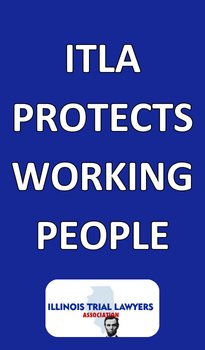* After a quick update on where testing stands, the governor took questions from reporters.
Please remember to pardon all transcription errors.
Obviously the mayor had her news conference a short time ago and a couple of differences in the timetables. Hers talks about 14 day timetables across all of the important metrics. You have 28 days on hospital admissions. Can you explain the difference? Are you considering making revisions to 14 days as well?…
No, but I think if you look at the mayor’s plan, and of course the mayor and I have spoken about this plan before, and indeed earlier today. It really is within the parameters of the plan that we put forward.
In other words, it is likely that, because they have some more stringent parts of their plan that when you put all of the pieces of it together from a timing perspective, it will fit I think nicely into the framework that we put forward.
And I think you know other local governments should be considering doing the same thing, thinking about how they can fit their timetables for opening businesses that are particular to their area of the state within the timetables that we’ve laid out, because those are the kind of the safety guidance and guidelines that we’ve set out, but the local governments, like the city of Chicago, are allowed to be more stringent than the state.
* This is the fourth day in a row of 100 plus fatalities. I believe that’s the first time we hit four days of triple digits. What does this suggest in terms of where we are and what the trend says?…
Dr. Ezike: Again, I think people who studied statistics know that you can’t go by a couple of days. It’s the average and where we’re going.
So I think if you look at our averages per week, we definitely have hit a peak of deaths in two weeks, maybe a week ago, so I don’t think overall this is one of our heaviest weights, even though there may have been a cluster of deaths that were reported that seemed high in four days in a row. But if you maybe take the aggregate and look at weeks I don’t think this week has been worse than last week so again, looking day to day or even looking at several days is a little bit harder. I think when you stand back and maybe take a week at a time, we can get bigger trends and to get a more more balanced view and I think, overall, I think we’re going in the right direction I think definitely this week.
Is that as important of a metric as positivity for hospital admissions?…
Well they’re related, they’re all related. So you could imagine that the deaths might be proportional to people being hospitalized, people being hospitalized will be proportional to the number of people who got infected. So I think it’s a continuum. If you think of how the disease would happen first, there would be the virus, somebody would get infected, somebody might get sick, somebody might get hospitalized, might get into the ICU, so there is a continuum there. So all of these statistics and these metrics actually do relate to one another.
Dr. Ezike then said that the Kawasaki type illness seen in young children lately will be made a “reportable illness” by IDPH.
* Restaurants, they are desperately asking that they can reopen in phase three perhaps at 25% capacity. This is an industry that’s used to being regulated they’re great at compliance, they’re professionals. What are the experts telling you that the scientist and they have to be knowledgeable about why 25% capacity in phase three can’t happen according to your plan?…
This is now secondhand information that maybe Dr. Ezike has something to add to because she’s been in many of those conversations too. But first of all, I mean I want as much as anyone to make sure that small businesses are able to open and so many restaurants and bars out there so people who risk their capital and their time and effort and energy to start those businesses and I know they are devastated and it’s why I support you know Sam Toia who’s the head of the Illinois Restaurant Association, has advocated for and he’s right that there ought to be support for the restaurant industry that comes out of the supports the cares act type supports that come out of Washington DC.
In terms of why the epidemiologists have seen restaurants as more difficult to open than let’s say other kinds of small shops. My understanding of it is that, because it’s very difficult to socially distance as between a server and the food, the server, the food and delivery of the food to the table. It’s also difficult even to seat people at tables the way they’re normally configured in a six foot distance for everybody that’s sitting at a table. So that’s my understanding of why you know as between I think you probably add to that the dishwasher. And the person who’s the chef in the back, the bartender and so on. Just the number of people who kind of come in contact with the thing that you’re ultimately getting delivered to you, and they can’t be delivered in a socially distance way is the reason.
Are you on the phone with Senator Durbin, with other congressional representatives regarding a federal bailout or relief package specific to restaurants because they’re as you indicated they’re really calling for that?…
Yeah, so I’ve been on the phone, I have been in contact with the restaurant association with many of the people in the industry, about that and certainly as I discuss the broader issue of support for state and local governments and small businesses with our federal representatives. I try always to bring in the different industries that I think they particularly a particular day, Illinois. And this is a good example, because we have so many restaurants and so many great restaurants in Illinois that attract people from around the world. So yeah, I try to bring up the industries that are most affected by COVID-19.
Is the restaurants, the [same as] how you went to bat for the hospitals for instance?…
And I do and I just to be clear, I just didn’t want to overstate I mean I do there are other industries that I also talked about I didn’t want to overstate how I talk about restaurants, but I do believe that Sam Toia and the industry is correct, that they deserve support so many small businesses and so many people depend upon those jobs as entry level jobs as well as permanent positions.
[This was followed by very detailed questions about IDES. I’m going to skip them for now because I’m behind.]
* Amy Jacobson from WIND asking you if Chicago sports teams can’t play in front of fans later this summer or fall, do you support the idea of letting them play in neighboring states?…
Well, I would listen we’re gonna work very hard to have a play here. I have spoken with the commissioners of the various major league teams. And they all are looking for ways to do it safely. They want to protect their players. They, none of them have suggested to me, short of getting to stage five really, that they would have fans or many fans in the stands. They are looking for television, the ability to broadcast a game. And so, as far as neighboring states, well we have all the facilities here for them to do it. We would want to see their plan. I’ve suggested that they are putting a plan together, where they already have put a plan together and they intend to submit it to have it reviewed by our medical experts and by me and to make sure that it fits with the stages and considerations that we’ve made for businesses. But look I’m the first person, I want to see sports play and I think it’s good for everybody. I think they can do it here in Illinois, and especially if you look at the timetable, there’s a high likelihood that they could do it within a timetable that we’re hoping that we’ll be able to reopen many businesses.
[Gotta hand it to her. That was a pretty good zinger.]
* Jordan: [A reporter] has a question that we are going to amend so we can get multiple questions out of the way. Governor, are you aware of the back to business plan made by representative Wilhour and Bailey in an effort to reopen Central Illinois regions, is this something you’ll consider? There are also many questions about XYZ plan from various places around the state. So let’s answer that all at once…
I am aware of multiple plans from multiple places around the state of Illinois. I think this demonstrates why there ought to have been a federal plan that was put forward. Because, now what you’ve got is a patchwork of states doing different things, some of us creating pacts in various regions of the country. And now you see counties want to put together their own plans, cities and counties, you know, cities want to work with other cities, mayor’s talking to each other, submitting plans. Everybody’s got a different plan. The truth is, this is why you need leadership. This is why you need to make sure that we’ve got a plan that works for the regions, that allows regions to move forward or backward if they’re meeting or not meeting the requirements for health. ButI have read many of these plans that have been put forward and I’ve included many of those ideas in our [plan].
* Should parents assume that summer camps will be canceled this year?…
I mean I suppose it depends upon the timing. I wouldn’t assume anything and I would look very intently for whether treatments are being developed. That will be appropriate for us to change the playbook because that’s what I’m really hoping we’ll be able to do. And of course in phase four we’ll be able to have 50 person gatherings and that is something that would work with summer programs. Maybe not overnight camps but there certainly could be camps of 50 people together.
* You said the other day that you don’t think the public will want to go to restaurants too soon, has the industry’s response to your reopening plan changed your thinking at all? Also Why doesn’t your plan require a decrease in cases like Mayor Lightfoot?…
I think if you look at other states that have simply flung the doors open on their restaurants you’ve seen that there are you know the expectation was very high that people go rushing back to restaurants they haven’t. And so that’s why I made the comment that I did I did make.
[On the Lightfoot part of the question] That’s a different approach that they’ve taken. That is absolutely something that we considered, but I just want to say that for those who think that we ought to be opening more quickly, I would say that our plan is makes it more likely that one could open at the end of May, than some other plans. And so you know I just say that requiring a decrease as opposed to a stability, when we have hospital availability if you meet all the other criteria then you know making sure you have positivity rates at a certain level hospital availability at a certain level and so on. Those things all work in tandem with one another, to get us you know healthy reopening. So I think the mayor’s plan is a is a good one for Chicago I haven’t looked at details, at least, you know, in the last day. If any changes were made, but it’s a good plan, it fits within the plans that we have for the state.
* Hundreds of thousands of people use public transit in Illinois every day during normal times. When the Northeast Region eventually reaches phase four, where gatherings of 50 or fewer are permitted, what direction will you give the RTA? Will there be limits on the number of people in train cars or buses, will large downtown companies who have a lot of employees coming into the Loop be required to participate in some sort of agreement of staggered work from home days to get ridership down?…
We will certainly be working on staggered work hours with major businesses, and all across the state honestly that are reliant upon mass transit. But that’ll obviously be much, much more concentrated in the collar counties and Cook County.
It is very important that we have our mass transit clean, and make sure that it is COVID free and that we protect all the people who are riding on mass transit. That’s something that I’ve expressed to the mayor and to many of the surrounding county leaders because we just have to make sure that people can use mass transit in a reopening society, on a regular basis. Otherwise, we won’t be able to reopen safely.
* Lori Lightfoot said today she’s determined to open schools this fall. Do you have a response to that statement and whether you’re considering this for the state?…
I think we’re all determined, want very badly for schools to open and that is my hope and desire. I think that’s what she is expressing as well, and planning I think you’ve got to do planning for reopening in the fall. So I, none of us knows what the future exactly holds but I think we have a great hope that and desire for reopening schools.
* Congressman LaHood joined two state lawmakers for a press conference in Quincy today. They say you should visit Quincy to see your impact to the order is having downstate. Will you leave Chicago?…
Yeah, and you know that I have regular contact with people in Quincy/ I certainly understand, read the newspapers, understand the challenges that all the areas of the state are undergoing. I think that someone who lives in Quincy can understand what’s going on in Cook County in the collar counties just as easily as somebody who may be standing in the cook and the collar counties can understand by reading what’s going on in their area. But I look forward to traveling around the state, and to, you know, speaking with elected officials and people about the challenges that people are having.
And, most importantly, I think, rather than traveling is just addressing those challenges which is what we’ve been doing for two months now. You know, this is my 61st day straight on the job, not just standing in front of a microphone, but working for the people of Illinois on this coronavirus crisis. And I’m not going to stop until we overcome it. I’m not going to stop until we revive the economy. It’s our obligation, we’ve got to get things moving again safely for our families.
* A restaurant owner in Southern Illinois reopened his restaurant this morning with plans to space people out, to practice social distancing. He says the local health department called and threatened to revoke his food permit. Now he plans to sue. Why isn’t the state’s criteria to reopen based on an individual business’s ability to practice social distancing?…
Because this virus isn’t limited to the four walls of that one business. That’s why.
* Exelon had its quarterly earnings call today and said it wants Springfield to deliver a subsidy package for its struggling nuclear plants by the end of May, or possibly the summer. Is that a priority for you right now, and how big of a problem is it for Exelon to advance any kind of agenda at the Capitol with all of the investigations into its lobbying activities still unresolved?…
Yeah, I’ve said that, you know, we’re gonna make sure that we work on an energy package for the state and we don’t need the high paid lobbyists to be guiding that for us. I think the legislature has been working on this for some time. I have been working on it for some time. And I can’t tell you exactly when something will get passed on it. My hope is that the legislature has been continuing its work in the working groups that have been created for it, as it has on so many other topics, and I look forward to the legislature getting together again to address so many challenges that we have. But is it true that that there are higher priorities right now? Yes there are higher priorities right now, and that’s reviving our economy.
* The city of Bloomington has canceled the Fourth of July fireworks display. Do you recommend more cities and towns do this considering it’s a gathering of more than 50 people?…
Again, I think people can read for themselves what the health consequences are of not following the rules that we put in place for each phase. So I think those are decisions that will have to be made at the local level. And again, you know I’m hoping that by July there will be some areas that we’ll be able to have gatherings of 50 or less, but there’s no guarantee of that and we’re watching it for the data, the science to determine whether and when these things can take place.
* Massachusetts and Illinois both reached 1000 cases within two days of each other. Massachusetts started contact tracing in April and they now have 1600 investigators. Why is Illinois so far behind Massachusetts?…
Actually we’ve been contact tracing since the very beginning and I think Dr Ezike was suggesting that earlier. Remember we have local county public health departments, they have health workers, neighborhood health workers. So does the city of Chicago, Cook County and other counties.
So there’s it’s not that there’s no contact tracing going on. What we’re spinning up in Illinois is a much more robust contact tracing effort, and it is like the one in Massachusetts. And indeed, you know we are following the model of Massachusetts taking a lot of advice from Massachusetts and we are working hard to spin that up but remember that much of what Massachusetts has is what much of what Illinois will be starting with which is all of the existing contact tracing that’s already going on and then we’ll be adding on workers and volunteers on top of that
[My question was why the state is lagging behind the state of Massachusetts and he did not answer it. I’ll ask again next week, I suppose.]
* Black and Latino people have disproportionately lost their jobs due to this pandemic, according to today’s jobs report. What will the state do to help workers of color who have been impacted by this?…
Yeah, well you know that’s what we’re trying to do as we reopen the economy, is to make sure we’re providing supports for families, as they get their jobs back or as they go seek a new job. It’s very important to me, in particular that we, those communities have been left out and left behind for decades, are the ones who are the first ones that are affected when we’ve got a downturn. And this downturn, which is caused by this invisible enemy, has so badly affected communities of color. So we’ve got to make sure that we’re focused on providing supports for communities. And by the way that also includes everybody else in the state that has been so badly affected. So those supports though in the communities that are poorest are the communities that are most hard hit are vitally important, so that’s part of what we’ll do. And then of course you know trying to revitalize the industries that employ many people across the state in particular communities of color is part of the plan going forward. I’m not, the plan that we put forward for restoring and reopening the state is just a beginning, you know, economic development, encouraging the creation of or the rebuilding of small businesses has got to be a vital part of what we do to build up the economy of the state in the aftermath or at least as we’re trying to deal with COVID-19 in a phase three, phase four and phase five world and that’s one of the reasons that I’ve gone back to Washington DC, to the people in Washington DC to ask them for support for the state so that we can do the work on the ground that a broad federal program can’t do, and that’s helping put back these jobs that have been lost.
-30-
16 Comments  
|
Lightfoot lays out her own reopening plan
Friday, May 8, 2020 - Posted by Rich Miller
* Press release…
Mayor Lori E. Lightfoot, alongside the Chicago Department of Public Health (CDPH), today announced the “Protecting Chicago” framework that the City will be using to guide Chicago’s reopening process amid COVID-19. The framework – organized into five phases in alignment with the State of Illinois’ “Restore Illinois” plan – will advise Chicagoans on how to safely exit from shelter-in-place while continuing to prioritize the health of our most vulnerable residents.
“Throughout the COVID-19 crisis, we have been committed to basing our decisions on the science and data related to this disease and communicating our actions to the public in an open and transparent way,” said Mayor Lightfoot. “Though we still have a way to go before we can begin reopening our city, when the time comes, that reopening will follow our thoughtful, data-driven process aimed at ensuring all our residents and businesses are informed and supported every step of the way.”
The framework lays out how the City is thinking about reopening, and the details for each phase are being informed by economic and health data, and a combination of input from industry working groups, health experts and the public. As part of the reopening strategy, the City is soliciting public input to gauge sentiment on shelter-in-place and ensure the reopening is phased in a way that eases concerns that residents may have. To provide feedback, residents can visit https://www.chicago.gov/coronavirus/reopeningsurvey to complete a short survey.
The “Protecting Chicago” framework comprises five phases, and Chicago has already transitioned from phase one (Strict Stay-at-Home) to phase two (Stay-at-Home):
PHASE ONE: STRICT STAY-AT-HOME – Limit the amount of contact with others; goal is to limit interactions to rapidly slow the spread of COVID-19
• Essential workers go to work; everyone else works from home
• Stay at home and limit going out to essential activities only
• Physically distance from anyone you do not live with, especially vulnerable friends and family
PHASE TWO: STAY-AT-HOME – Guard against unsafe interactions with others; goal is to continue flattening the curve while safely being outside
• Essential workers go to work; everyone else works from home
• Stay at home as much as possible
• Wear a face covering while outside your home
• Physically distance from anyone you do not live with, especially vulnerable friends and family
PHASE THREE: CAUTIOUSLY REOPEN – Strict physical distancing with some businesses opening; goal is to thoughtfully begin to reopen Chicago safely
• Non-essential workers begin to return to work in a phased way
• Select businesses, non-profits, city entities open with demonstrated, appropriate protections for workers and customers
• When meeting others, physically distance and wear a face covering
• Non-business, social gatherings limited to <10 persons
• Phased, limited public amenities begin to open
• Stay at home if you feel ill or have come into contact with someone with COVID-19
• Continue to physically distance from vulnerable populations
• Get tested if you have symptoms
PHASE FOUR: GRADUALLY RESUME – Continued staggered reopening into a new normal; goal is to further reopen Chicago while ensuring the safety of residents
• Additional business and capacity restrictions are lifted with appropriate safeguards
• Additional public amenities open
• Continue to wear face covering and physically distance
• Continue to distance and allow vulnerable residents to shelter
• Get tested if you have symptoms or think you have had COVID-19
PHASE FIVE: PROTECT – Continue to protect vulnerable populations; goal is to continue to maintain safety until COVID-19 is contained
• All businesses open
• Non-vulnerable individuals can resume working
• Most activities resume with health safety in place
• Some events can resume
• Set up screenings and tests at work or with your family
• Sign up for a vaccine on the COVID Coach web portal
The epidemiological criteria for transitioning between phases are rooted in public health guidance and will be reviewed and revisited on an ongoing basis. Health-based metrics are one of the many considerations that the City is weighing to determine the details of the City’s reopening approach and sequencing. Foremost, Chicago is monitoring answers to these four questions in order to help determine when and how the transition between phases takes place:
1. Is the rate of disease spread across the city and surrounding counties decreasing?
2. Does the city have the testing and contact-tracing capacity to track the disease and limit spread?
3. Are there enough support systems in place for vulnerable residents?
4. Can the healthcare system handle a potential future surge (including beds,
ventilators and PPE)?
“While our goal is to get as many people back to work as quickly and safely as possible, we will keep data and science as the north stars of this work, as we have throughout the COVID- 19 pandemic,” said Commissioner of the Chicago Department of Public Health, Allison Arwady, M.D. “We also recognize that some populations and families are suffering more than others in this crisis, and we are taking that into consideration as we prepare for reopening as well.”
A set of epidemiological factors has been established to guide the next transition from phase two (Stay-at-Home) to phase three (Cautiously Reopen), including:
• COVID-19 Case Rate (over 14 days, as a rolling average):
o Declining rate of new cases, based on incidence and/or percent positivity
• Severe Outcome Rate (over 14 days, as a rolling average):
o Stable or declining rates of cases resulting in hospitalization, ICU admission, and/or death
• Hospital Capacity Citywide (over 14 days, as a rolling average):
o Hospital beds: <1800 COVID patients o ICU beds: <600 COVID patients
o Ventilators: <450 COVID patients
• Testing Capacity:
o Test at least 5% of Chicago residents per month
• Testing Percent Positivity Rates (over 14 days, as a rolling average):
o Congregate: <30% positive tests
o Community: <15% positive tests
• Syndromic Surveillance (over 14 days, as a rolling average):
o Declining emergency department visits for influenza-like illness and/or
COVID-like illness
• Case Investigation & Contact Tracing:
o Expanded system in place for congregate and community investigations and contact tracing
The specific health criteria for transition between the latter phases will be established and released over the coming weeks to ensure the City is open and responsive to new data and information as it arises. In addition to determining the health-based metrics to move from one phase to the next, the City is actively determining the appropriate sequencing of reopening businesses and public services – taking into consideration both economic enablers such as transportation and childcare concerns, as well as keeping an eye towards economically disadvantaged populations.
Those guidelines for moving forward are different than the governor’s plan. Should be interesting to hear what he says at his own presser today.
…Adding… From the presser…
31 Comments  
|
* Rebecca Anzel at Capitol News Illinois…
A judge on Thursday sided against an Illinois organization that claimed restrictions implemented to combat the novel coronavirus made it impossible to gather the necessary signatures to place a constitutional amendment on November’s general election ballot.
The official order was expected to be released sometime Thursday, a court clerk said.
The Committee for the Illinois Democracy Amendment is advocating for a constitutional change that would obligate the General Assembly to take roll call votes on bills proposing “stronger ethical standards for Illinois public officials.”
It would also allow residents to propose related bills by submitting a petition with at least 100,000 signatures.
The committee’s attorneys argued in a court document that social distancing and stay-at-home restrictions “forced” voters to weigh their health against their First Amendment rights.
Read the rest and you’ll see that former Gov. Pat Quinn is one of the attorneys in the case.
*** UPDATE *** Local 150 of the Operating Engineers has filed a federal lawsuit in Chicago to have the state constitution’s revision provisions declared unconstitutional, enjoined and/or modified. The union is pushing a state constitutional amendment that would outlaw “right to work” laws…
This is an action to declare unconstitutional, enjoin and/or modify the requirement contained in Article XIV, Section 2, of the Illinois Constitution which requires that proposed amendments to the Illinois Constitution be passed by the legislature at least six months prior to the next general election. This case is an emergency in light of the current public health crisis caused by the novel coronavirus, which resulted in the Governor’s emergency orders effectively shutting down the State. Consequently, the General Assembly cancelled sessions in both the House and the Senate from March 18, 2020, through at least May 3, 2020.
19 Comments  
|
* We’ve already discussed this Greg Hinz piece…
Under Pritzker’s order, “The earliest we’d be able to open is on June 26,” Illinois Restaurant Assn. President Sam Toia said. Those restaurants initially shut in early March. “I don’t know any business that can go 16 weeks with 80 percent or more reduce income and stay viable.”
Toia urged Pritzker to move restaurants from phase four to phase three, which sets lesser standards for testing, et al. Restaurants should have to require staff to wear masks and other personal protective gear and at least initially limit capacity, as has happened in some other states, Toia said. But moving restaurants to phase three would allow some to reopen by Memorial Day weekend.
* Toia, who came to the table and bargained with the governor over his minimum wage plan and then did not stand in the proposal’s way, has kept up the public pressure on this topic…
Sam Toia, president and CEO of the Illinois Restaurant Association, said the announcement caught him, and other industry leaders, flatfooted.
“The state did not really collaborate with us,” Toia said, “and we’re the largest private-sector employer in the state of Illinois. We’re having some communication now, but the plans are already out there.” […]
“Even if it’s slowly,” he said. “Let restaurants open June 1 at 25 percent capacity, then 50 percent by June 28. Some states are already open — Indiana, Georgia, Texas, Tennessee. So we’re going to see in another 10 days if there’s a spike in cases. If there is, OK, but if not, why can’t we look at June 1?”
“And when he’s saying the earliest date is the 26th, he’s not saying which region this is,” Toia said. (Pritzker’s plan divides the state into four regions.) “Is it the South? Does that mean Northeast (which includes Chicago) waits even longer?”
* Amanda Vinicky…
The Illinois Restaurant Association is hoping to persuade Pritzker to follow models in other states, where restaurants are allowed to partially reopen at a quarter or half of their capacity.
“We’re not opening till June 26 and we’re not even sure what the occupancy will be at that time,” Toia said. “We know that it’s 50 people or less. But a restaurant with 3,000 square feet is different than a restaurant with 30,000 square feet.”
It’s something he said Illinois restaurants would be willing to try, he said.
* Toia even ran to John Kass…
“Chicago is an independent restaurant town,” Toia said. “That’s what makes it such a great restaurant city. But independents need cash flow, and the governments want their taxes paid. But if something doesn’t change, we’ll lose at least 25% of our businesses, some say it could be 50%. And then what?”
Then Chicago will look like DeKalb, or Bloomington, or most any other Midwest town off the interstate: with a Walgreens on one corner, a Chili’s on the next, and don’t forget that Asian crunch salad at Applebee’s, or is that TGI Fridays?
Stay tuned. Mayor Lightfoot is set to unveil the city’s “reopening framework” today at 1:30. She abruptly canceled the unveiling yesterday, claiming a scheduling conflict. Should be interesting to see if Toia is there today.
*** UPDATE *** The mayor just told the city council that Toia will be at her event.
85 Comments  
|
[Simon now says it won’t reopen the malls. Click here.]
* Tim Moran at the Patch…
The Orland Square Mall, which has been closed since March 18 as a result of the coronavirus pandemic, is slated to reopen on May 31. The Simon Property Group that owns the mall announced this week their plan to open all their Illinois mall properties on that date.
Other Simon shopping centers scheduled to reopen on May 31 include Chicago Premium Outlets, Gurnee Mills, White Oaks Mall in Springfield and Woodfield Mall in Schaumburg. […]
In its reopening announcement, Simon outlined safety protocols it is taking with each mall reopening, including preemptive employee screening for coronavirus, requirements that all employees wear masks and frequently wash their hands. Employees that fail health screenings will be sent home. […]
Malls will implement occupancy limits and use “traffic measuring technologies” to ensure that occupancy does not exceed one person per 50 square feet of space, Simon said, adding, “As needed, we will restrict the number of open entrances to the property while complying with local fire code requirements, and have queuing protocols in place to manage traffic. Each tenant will be responsible for managing to targets set by state or local authorities for their leased spaces.”
It looks like they’re interpreting the EO to apply to individual stores, not the mall itself.
* The governor was asked about the mall in Orland Park today…
Again, indoor venues with hundreds and hundreds of people who will be walking together,that’s an extraordinarily difficult circumstance under the epidemiological recommendations here. So, that’s something that will have to happen over the course of months and not in the immediate next phase.
30 Comments  
|
* Dr. Ezike…
To date we have run a total of 379,043 tests for COVID-19 with 17,783 tests being resulted in the last 24 hours. Of those 17-plus thousand tests, 2641 tests were positive. That’s a 15% of positivity rate, and that brings our total number of positive cases to 70,873.
Most sadly, we report that we have exceeded 3000 deaths related to COVID for the state of Illinois. With the additional 138 lives reported as lost over the last 24 hours we now have a total of 3111 fatalities.
Regarding inpatient admissions related to COVID, 4862 individuals as of midnight were in the hospital with COVID, and of those 1253 patients are in the ICU, of those ICU patients 766 patients were on ventilators.
* Press release…
The Illinois Department of Public Health (IDPH) today announced 2,641 new cases of coronavirus disease (COVID-19) in Illinois, including 138 additional deaths.
- Clinton County: 1 male 70s
- Cook County: 1 female 30s, 1 male 30s, 2 males 40s, 2 females 50s, 5 males 50s, 1 unknown 50s, 6 females 60s, 12 males 60s, 1 unknown 60s, 9 females 70s, 19 males 70s, 10 females 80s, 14 males 80s, 17 females 90s, 6 males 90s, 1 female 100+
- DuPage County: 1 male 50s, 1 male 60s, 2 males 70s, 4 females 90s
- Jackson County: 1 male 60s
- Kane County: 2 females 80s, 1 female 90s
- Kankakee County: 1 female 80s
- Lake County: 2 males 60s, 1 female 80s
- Macon County: 1 female 70s
- McHenry County: 1 female 80s, 1 male 80s
- Peoria County: 1 female 90s
- Rock Island County: 1 male 70s
- Sangamon County: 1 female 80s
- St. Clair County: 1 female 80s, 1 male 90s
- Will County: 1 male 60s, 1 male 70s, 2 female 90s, 1 male 90s
- Winnebago County: 1 female 80s
Currently, IDPH is reporting a total of 70,873 cases, including 3,111 deaths, in 97 counties in Illinois. The age of cases ranges from younger than one to older than 100 years. Within the past 24 hours, laboratories have processed 17,783 specimens for a total of 379,043.
*All data are provisional and will change. In order to rapidly report COVID-19 information to the public, data are being reported in real-time. Information is constantly being entered into an electronic system and the number of cases and deaths can change as additional information is gathered. Information for deaths previously reported have changed, therefore, today’s numbers have been adjusted.
6 Comments  
|
* From the Anti-Defamation League…
Extremists and conspiracy theorists often use protests or rallies to spread their beliefs, but the pervasiveness and extensive media coverage of lockdown protests – which actually represent a minority opinion – has created an irresistible public platform.
There is ample evidence of extremists using these rallies to broadcast their beliefs. Members of the Three Percenters, a wing of the anti-government movement, attended events in Michigan, Oregon, Kentucky, Ohio, Illinois and California
* What are Three Percenters?…
A wing of the militia movement that arose as part of a resurgence of the militia movement in 2009. The term “Three Percenter” refers to the erroneous belief that only 3% of colonists fought against the British during the Revolutionary War—but achieved liberty for everybody. Three Percenters view themselves as modern day versions of those revolutionaries, fighting against a tyrannical U.S. government rather than the British. With anyone able to declare themselves a Three Percenter, the concept allowed many people to join who were not suited, physically or by inclination, to engage in paramilitary activities. The Three Percenter logo—the Roman numeral III—has become very popular among anti-government extremists.
* So I asked the ADL what evidence they had that those folks were at an Illinois rally. They referred me to this tweet. Check out the Roman numeral III on the rally sponsor’s sign…
Every politician who spoke at the rally stood in front of that sign, including Kendall County GOP Chair James Marter, Rep. Dan Caulkins and Rep. Darren Bailey.
* Orphans of the American Dream has a podcast and a Facebook site. Here’s its logo…

* From April 27th…
The Reopen Illinois rally was organized on Facebook by Orphans of the American Dream. Participants want their voices heard as Governor JB Pritzker extends the stay-at-home order on May 1. Pritzker announced changes coming to his executive order during a press conference Thursday afternoon.
“We’ve honestly been watching the press conferences from President Trump and Governor JB Pritzker and just been getting more and more infuriated every time we watch them,” said Matthew Walder who organized the rally. Walder was happy with the turnout, despite the rain. “I can’t even imagine if it was nice out, how many people would be here.” A similar protest took place at the Capitol on April 19 as part of the national Operation Gridlock.
Walder hosts a podcast for Orphans of the American Dream, but he says this isn’t a partisan issue. “I think this is medical tyranny and our economy is about to crash, let’s be frank. That’s what we’re worried about. There are businesses that are probably closed off now that probably won’t open again, and that’s a travesty,” Walder said.
I’ve reached out to the group via Facebook. I’ll let you know what they say.
…Adding… From comments…
I’m one of the hosts of that podcast you speak of. We are not actually associated with any militia groups whatsoever. We are a news podcast and social media page. Just 3 guys who like to talk about politics. Listen to our show and you will find the facts. Thank you
Just III guys.
34 Comments  
|
*** UPDATED x1 *** Nursing home strike averted
Thursday, May 7, 2020 - Posted by Rich Miller
* Press release…
Frontline nursing home workers who were poised to start a historic strike on Friday have reached a tentative agreement with nursing home owners for a two-year contract with significant wins that will help safeguard both workers and residents through the current pandemic and beyond.
The agreement impacts over 10,000 members of SEIU Healthcare who provide care to residents at the 100+ nursing homes of the Illinois Association of Health Care Facilities. The contract gains are a testament to the courage and commitment of workers who were poised to strike at 64 facilities in order to protect themselves and the residents for which they care during this time of unprecedented vulnerability and risk.
The workers won significant contract gains, including:
• Higher baseline wages bringing all workers above $15 an hour and establishing greater parity in wages across geographic areas
• Hazard pay for all workers for the duration of the COVID-19 crisis
• Additional fully paid sick days for COVID-19 related testing, illness or quarantine for duration of the crisis
• Provisions ensuring that employees are not required to work without adequate PPE as determined by regulatory agencies for the duration of the crisis
All of the major contract gains will help safeguard the health and safety of workers and the residents for which they care—at a time when both are vulnerable to the risks associated with COVID-19. While residents are at increased risk of the virus due to age and compromised health, workers face increased negative impacts from coronavirus due to their history of poverty wages, lack of paid time off, and the underlying health conditions that often accompany poverty. Additionally, a majority of workers are African-American, and a disproportionate number of African-American lives have been claimed by COVID-19.
Significantly, the agreement continues to build on the progress made by nursing home workers in recent years to lift wage standards for the industry.
The tentative agreement was overwhelmingly supported by members of the bargaining committee, but must be ratified by the larger group of members who will be impacted by its terms.
*** UPDATE *** Illinois Association of Health Care Facilities…
The Illinois Association of Health Care Facilities is proud that is has negotiated the largest wage hike in our history for our employees. With base pay raises up to 24%, the IAHCF has achieved the Fight for $15 ahead of the city and state for our dedicated employees on the frontlines of the coronavirus pandemic. This two-year contract includes $2 per hour COVID bonus pay for all 10,000 employees during the duration of the stay-at-home order and beyond, as well as expanded paid sick leave. While negotiations have ended, this insidious virus has not. We are grateful a walkout was avoided, and that our heroic staff members will continue caring for our vulnerable seniors as we fight this battle together.
8 Comments  
|
* Oy…
A further 3.2 million Americans sought unemployment benefits last week as the economic toll from the coronavirus pandemic continued to mount.
The new applications brought the total number of jobless claims since mid-March to 33.3 million.
That amounts to more than 15% of the US workforce.
However, it was less than the 3.8 million a week ago and down from the record 6.9 million for one week in March.
* Illinois estimate…
The U.S. Department of Labor estimates 74,476 new unemployment claims were filed during the week of April 27 in Illinois, according to the DOL’s weekly claims report released Thursday. […]
During the week of April 20, the U.S. Department of Labor estimates 81,245 new unemployment claims were filed in Illinois.
During the week of April 20, there were 3,169,000 new claims filed across the U.S.
The U.S. Department of Labor estimates 102,736 new unemployment claims were filed during the week of April 13 in Illinois
*** UPDATE *** Yikes…
The Illinois Department of Employment Security (IDES) today released new statewide data showing the department processed 74,476 new initial unemployment claims for the week ending May 2, and with upward revisions from weeks past, has now processed 1,006,925 initial unemployment claims from March 1 through May 2. This nearly 12 times the number of claims the department processed over the same period last year, when IDES processed just 78,100 initial unemployment claims.
Statewide unemployment claims data, which reflects activity for the week prior, will be available on the IDES website every Thursday afternoon. Previous initial claims data has undergone an upward revision to properly account for a number of successfully processed claims. While the number of initial claims has slightly declined over the last two weeks, IDES may experience an increase when the federal Pandemic Unemployment Assistance (PUA) program becomes available on Monday, May 11, 2020.
Workers who believe they may be eligible for new federal benefits under the Pandemic Unemployment Assistance (PUA) program, must first apply for regular unemployment insurance before applying for benefits under PUA when a new application portal opens on Monday via the IDES website.
Claimants who receive an eligibility determination of $0 can then appeal that decision by providing verification of wages earned or they can submit a claim for PUA benefits. Claimants who have already applied for and been denied regular unemployment benefits can submit a claim through the new PUA portal when it opens. Receiving a denial for regular unemployment benefits is a mandatory first step in determining eligibility for PUA.
PUA provides 100% federally-funded unemployment benefits for individuals who are unemployed for specified COVID-19-related reasons and are not eligible for the state’s regular unemployment insurance program, the extended benefit (EB) program under Illinois law, or the Pandemic Emergency Unemployment Compensation program (PEUC), including independent contractors and sole-proprietors. Up to 39 weeks’ worth of benefits are potentially available under the program for COVID-19-related unemployment claims.
IDES is contracting with Deloitte to implement and maintain the web-based PUA program. While a program of this magnitude would normally take up to a year to design and implement, the department worked swiftly to get the program up and running within 4 weeks.
PUA claims will be backdated to the individuals’ first week of unemployment, but no earlier than February 2, 2020, and will continue for as long as the individual remains unemployed as a result of COVID-19, but no later than the week ending December 26, 2020. The program is similar to the federal Disaster Unemployment Assistance program which provides unemployment benefits in response to local disasters.
12 Comments  
|
|
 Support CapitolFax.com
Support CapitolFax.com
Visit our advertisers...

 ...............
...............
 ...............
...............
 ...............
...............
 ...............
...............
 ...............
...............
 ...............
...............


|
   
|
Hosted by MCS
SUBSCRIBE to Capitol Fax
Advertise Here
Mobile Version
Contact Rich Miller
|
















